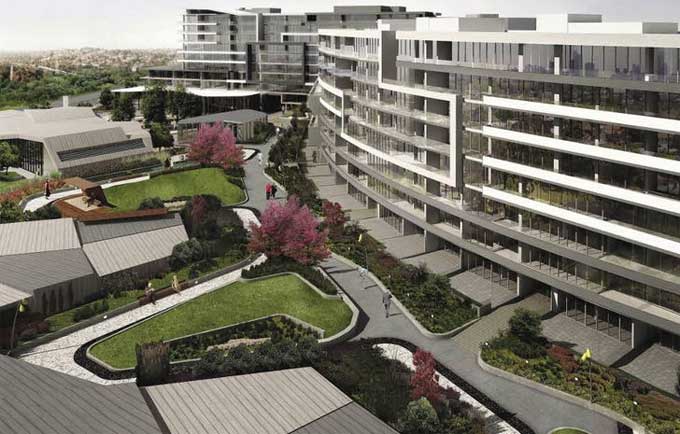Making a compelling proposal for architecture: six tips
Tweet
Getting more work and converting it to money is what we all strive for. It would be even better if we won better projects for our work. Your passion projects should not only pay well, but should also allow you to unleash your creativity, make a lasting impact in your community, and take pride in what you do.
These opportunities are difficult to come by because of stiff competition. No matter if you are guiding developers, competing in a fast-paced design competition, or submitting a request for proposal (RFP), be ready to bring your case forward.
It is your ability to communicate your design vision that determines whether your bid will win or lose. To help you craft winning conceptual designs and proposals, here are tips from proposal writers and leaders in the design industry.
1. Describe the context of your design to your clients
It may spark ideas for improving your design concept if you examine the details of the client's project and show them you have taken the time to understand and research their project.
Displaying your conceptual design alongside real-world context is an easy way to demonstrate that you know the topography, structures, and other existing conditions. By using features such as Add Location, you can geolocate a potential site.
Once the high-resolution satellite imagery has been imported, you can create simple massing concepts. Use a tool like PreDesign to perform precise shadow studies using climate data analysis.
It is recommended that you show you understand how the topography of the site will impact building placement, pedestrian access, and occupant views. There will be no doubt in their minds that you pay attention to details.
2. Creating Visuals that are stunning
3D models can be rendered using rendering software to create emotive visuals, videos can be used to tell a story, or virtual and augmented reality can be used to create an interactive experience. Regardless of what you decide, make your design stand out by developing a unique visual style.
The realism of your visuals can make or break the success of a proposal. For example, V-Ray or Enscape is visualization software that you can use for that.
3. Choosing the right team for the job and needs
The team you choose should be based on experience, previous collaborations, and the client's goals. Suppose you are trying to decide which landscape architecture firm to hire for a new project.
If you have partnered with a landscape design firm in the past, you know they are dependable, consistent, and innovative.
If the client prefers another landscape architecture firm, you can also work with them. Your structural engineer has provided you with a positive reference for option B, even though you have never worked with it. A living building is an essential part of the client's goals and needs.
4. Engage in connection-building with clients
A design idea is just the beginning of the process of building connections. A successful job begins with making connections with clients, end-users, developers, other architects (if you want to collaborate with other architects), local council members, contractors, and city officials.
Focusing on building connections central to the type of project you are working on is essential with a long list of people with whom to build trust.
Maintaining old relationships is just as important as making new ones when it comes to making new connections. Your business relies on repeat clients to grow, so consistently deliver excellent service and make sure all of your clients post-occupancy concerns are addressed as soon as possible.
5. Repeat and make clients understand your ideology
There is a possibility that your competitors may have thought of your initial concept as well if you are entering a high-profile design competition. In order to win the job, you need to take an angle that other applicants haven't taken. This process takes staff away from billable hours if you do not have time to spend on ideating.
If you want to decrease the amount of rework required on 3D models, stay with low-level details or leverage a limited range of dynamic and live options. You can add components until you determine the final concept to add richness.
To get online demonstration, watch the following video tutorial.
Video Source: DamiLee
6. Your vision needs to be clearly communicated
In order to communicate your design vision to a client, visuals are just one part of the process. Usually, your proposal includes a written section where you describe the team, your values, previous projects, and your approach.
Many architects, engineers, and construction business owners have advised us to write clearly and concisely while focusing on the client.
You need to be able to convey your message effectively in front of a crowd. It is possible that your presentation is a combination of screenshots and PNGs, even if your idea is designed in three dimensions. You can use 2D visuals in your story at the right time and in the right place.
Final Thoughts
As you seek that winning conceptual design, focus on the connections that best serve your firm's goals, collect your A-team, research your client's values, and then make yourself clear.
The aids you use are 3D technology and stunning visuals that show the client what their project can be like. Do not hesitate to ask the client for a debrief if you are not hired to see how you can improve.
A proposal that is both unique and inspiring is something that is truly an art form. When architects master this skill, they will be able to produce the best projects and ultimately perform the work that they are most passionate about.

Gallery
Feel free to contact us for BIM requirements. One of our representative will respond you within 24 Hours. Send us your projects requirement today and grow your project.
Explore More !







